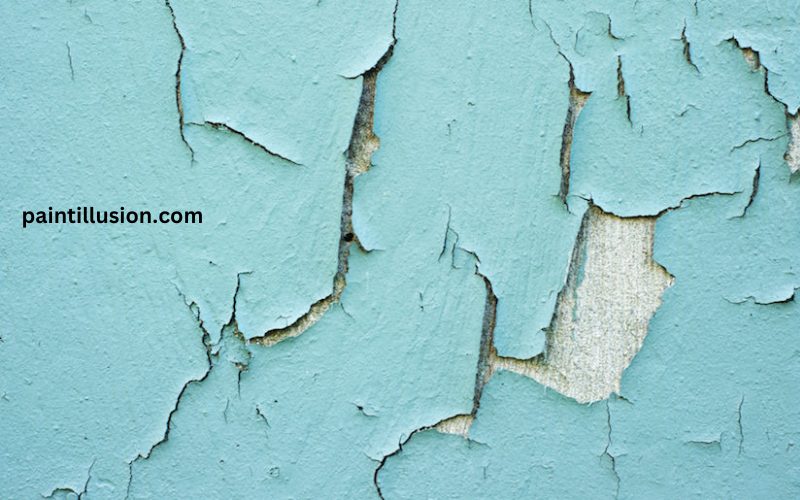Lead paint is a significant concern due to its potential health hazards, especially in older homes. Understanding what lead paint looks like is crucial in identifying and addressing its presence. In this article, we will explore the dangers of lead paint, how to identify it, the visual characteristics to look out for, testing methods, health risks associated with exposure, regulations and laws concerning lead paint, and the steps to remove or mitigate its presence. By the end of this comprehensive guide, you will have a better understanding of lead paint and how to deal with it safely.
The Dangers of Lead Paint
Lead paint poses severe health risks, particularly for young children, pregnant women, and individuals with compromised immune systems. When lead paint deteriorates, it can release lead dust and chips into the air, creating a hazardous environment. Ingesting or breathing in lead particles can lead to lead poisoning, causing developmental delays, learning disabilities, organ damage, and even death in extreme cases. It is crucial to be aware of the dangers associated with lead paint and take necessary precautions to protect yourself and your loved ones.
How to Identify Lead Paint
Identifying lead paint can be challenging, as it is often hidden beneath layers of newer paint. However, there are several ways to determine if your home contains lead paint. One method is to visually inspect the painted surfaces. Lead paint is commonly found on windows, doors, trim, and railings. It has a distinct appearance, usually characterized by a chalky or dusty texture. Additionally, lead paint tends to crack or chip easily, revealing multiple layers of paint. If you suspect the presence of lead paint, it is crucial to confirm through testing before taking any further action.

Visual Characteristics of Lead Paint
Lead paint has specific visual characteristics that can help in its identification. It often appears as a thick layer of paint with a dull, matte finish. The color of lead paint can vary, but it is commonly associated with shades of white, gray, or beige. Over time, lead paint may darken or turn yellowish. Another visual characteristic to look out for is the presence of “alligatoring” or a pattern resembling the scaly skin of an alligator. This cracking pattern is a common indication of lead paint. By familiarizing yourself with these visual characteristics, you can become more adept at identifying lead paint in your home.
Testing for Lead Paint
While visual inspection can provide some clues, the only way to definitively determine the presence of lead paint is through testing. There are various testing methods available, including lead test kits and professional laboratory analysis. Lead test kits are readily available at hardware stores and can provide quick results. These kits involve swabbing the painted surface and using a chemical solution to detect the presence of lead. For more accurate and comprehensive results, professional laboratory analysis is recommended. This involves sending paint samples to a certified laboratory for testing. Whichever method you choose, testing is essential for accurate identification of lead paint.
Health Risks Associated with Lead Paint Exposure
Exposure to lead paint can have severe health consequences, especially for vulnerable populations. Children are particularly susceptible to lead poisoning as their developing bodies absorb lead more readily. Lead exposure in children can lead to cognitive impairments, developmental delays, behavioral problems, and reduced IQ. Pregnant women who are exposed to lead paint may experience complications such as premature birth, low birth weight, and developmental issues in their unborn child. Adults exposed to lead paint can suffer from high blood pressure, kidney damage, reproductive problems, and neurological disorders. It is critical to address lead paint exposure promptly to prevent these health risks.
Regulations and Laws Regarding Lead Paint
To ensure public safety, there are regulations and laws in place concerning lead paint. In many countries, including the United States, the use of lead-based paint in residential properties has been banned since the late 1970s. These regulations restrict the amount of lead that can be present in paint and require disclosure of lead paint hazards in certain circumstances, such as during the sale or rental of a property. It is essential to familiarize yourself with the specific regulations in your area to comply with the law and protect yourself and others from lead paint exposure.
Removing or Mitigating Lead Paint
When dealing with lead paint, it is crucial to follow proper procedures to minimize the risk of exposure. If the lead paint is in good condition and not deteriorating, encapsulating it with an encapsulant paint can be a viable option. This creates a barrier between the lead paint and the environment, preventing the release of lead particles. However, if the lead paint is peeling, chipping, or in poor condition, it should be removed to eliminate the risk entirely. Removing lead paint requires strict safety measures, including wearing protective clothing, using wet methods to minimize dust, and proper disposal of lead-contaminated materials. It is advisable to hire professionals trained in lead paint removal to ensure the process is carried out safely and effectively.
Hiring Professionals for Lead Paint Removal
Removing lead paint is a complex task that requires expertise and specialized equipment. Hiring professionals experienced in lead paint removal is highly recommended to ensure the safety of both the occupants and the environment. Lead paint removal professionals have the knowledge and skills to handle the process correctly, minimizing the risk of lead exposure. They follow established protocols, utilize appropriate containment measures, and employ specialized tools to efficiently remove lead paint. Additionally, professionals can conduct post-removal testing to confirm that the area is free from lead contamination. When it comes to lead paint removal, entrusting the job to professionals is the best course of action.
Conclusion
Identifying and addressing lead paint is of utmost importance to protect yourself and your loved ones from the potential health risks associated with lead exposure. By understanding the visual characteristics of lead paint, conducting proper testing, and following regulations and laws, you can effectively manage lead paint in your home. When it comes to lead paint removal, hiring professionals ensures the process is carried out safely and efficiently. Remember, lead paint is a serious concern, but with the right knowledge and precautions, you can create a safe and healthy environment for your family.
CTA: If you suspect the presence of lead paint in your home, take immediate action to protect your loved ones. Contact a professional lead paint removal service today for a thorough assessment and safe removal. Your family’s health and well-being are worth the investment.

